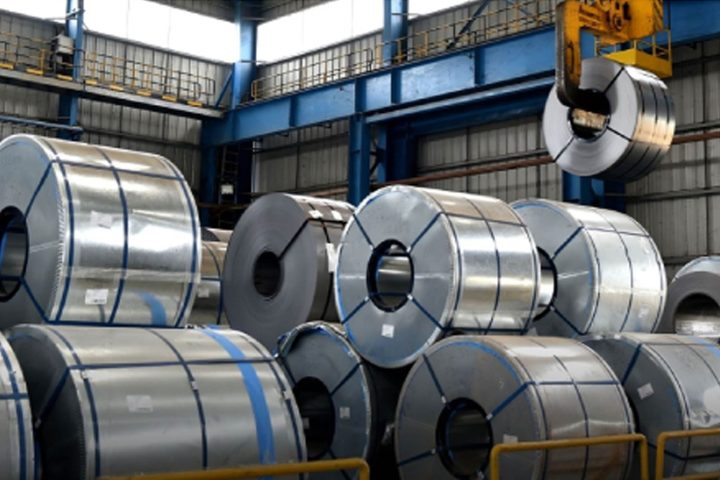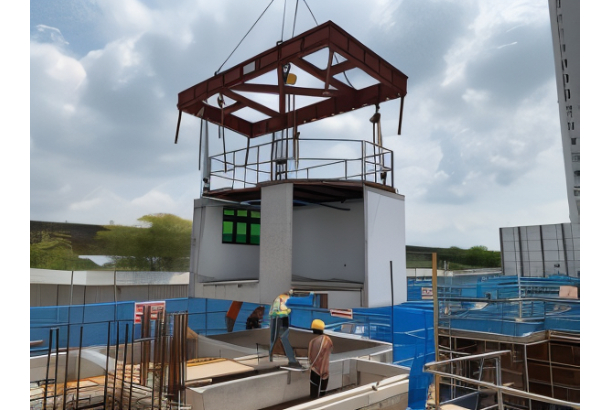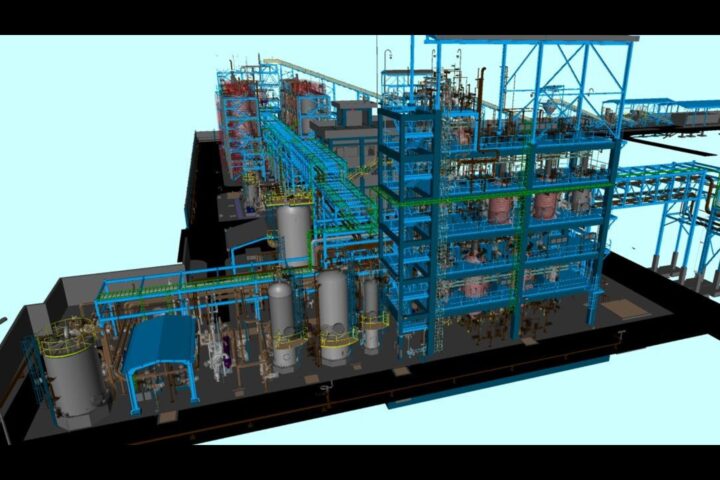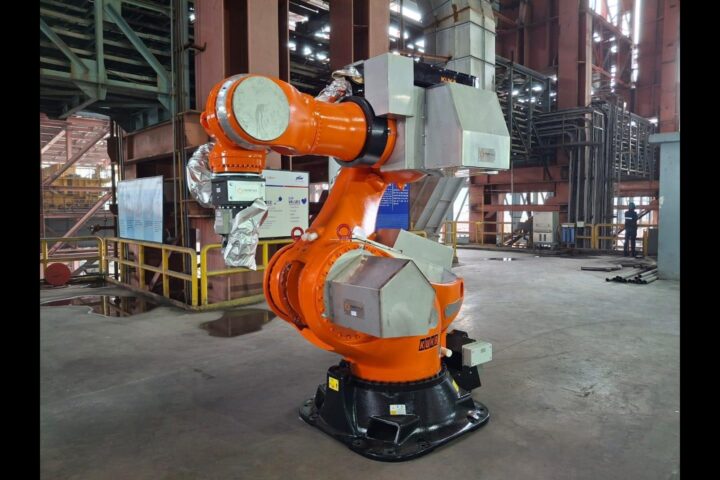by Dr. AK Bhattacharya, IFS (Retired), Former Mission Director, MP State Bamboo Mission
Nitin Gadkari, Union Minister for Road Transport and Highways and MSME, who is known to be strong proponent of alternate fuels, has said that he is working on a project to make aviation turbine fuel (ATF) out of bamboo oil, and plans to set up a refinery for the production of aviation fuel from bamboo grown in Maharashtra's Gadchiroli district. He said, "I am planning to set up a bio-refinery for the production of aviation fuel. The bamboo for this will be sourced from Gadchiroli district. I have begun to work on this and in two to three years, I will show you flights running on this biofuel”. “When I say this in Delhi circles, they think I am crazy. But NEERI is working on a project to extract oil out of bamboo. As much as 40% oil can be extracted from bamboo, and it can be processed to make the fuel that is used in aircraft; The NEERI report will be out soon, said Gadkari”. “I strongly believe that continuing with traditional crops like cotton, soyabean or even paddy and wheat is not going to help the farmers much. Sources of alternate fuel can be the future. Bamboo can even be grown on the farms’ edges,” he said.
Indian Air Force has already flown a jet and a helicopter on biofuel made out of jatropha seeds. “When those from two major automobile companies — Bajaj and TVS — came to meet me, I said, “do not expect anything from me till you come up with two-wheelers running on alternate fuels”. “Now, TVS has launched a motorcycle running on biofuel which is on display. The farmers can provide the source for bio-fuels. I have a plan to make the districts of Nagpur, Chandrapur, Gondia Bhandara and Gadchiroli diesel-free. All the vehicles, including buses and tractors, will run on biofuels,” he said.
He has also called for more intensive use of bamboo resources and asked the Ministry of Development of North Eastern Region to formulate a comprehensive ''Bamboo Policy''. He also suggested making available more incentives to bamboo production, processing, and handling and said that this will go a long way in developing the bamboo-based industry. Emphasising on the production of high-yielding bamboo varieties, he said, for industrial use, bamboo yield should be 200 tonnes per acre against about 40 tonnes per acre in the case of some varieties. The greater yield and wider bamboo usage will open up more employment generation especially in the north-eastern region.
He has further expressed that bamboo sticks may be reduced to bales so that moisture is removed thereby making transportation easier and cheaper and increasing its calorific value. He considers that IITs may be roped in to undertake a pilot project in this regard. Taking this forward, Minister of State (Independent Charge) for Development of North Eastern Region (DoNER) Jitendra Singh, Ministry of DoNER and North Eastern Council is taking all measures for tapping bamboo resources and technical know-how at the all-India level. The ministry has already decided to develop three Bamboo Clusters in Jammu, Katra and Samba areas for the making of bamboo basketry, 'agarbatti' and bamboo charcoal as well as setting up of Bamboo Technology Centre.
Aviation Fuels
Aviation fuels are petroleum-based fuels, or petroleum and synthetic fuel blends, used to power aircraft. They have more stringent requirements than fuels used for ground use, such as heating and road transport, and contain additives to enhance or maintain properties important to fuel performance or handling. They are kerosene-based (JP-8 and Jet A-1) for gas turbine-powered aircraft. Piston-engine aircraft use gasoline and those with diesel engines may use jet fuel (kerosene). Aviation Fuel is the foremost requirement for any and every flight, making it one of the integral parts of flight operations and aviation industry. Reliable aviation fuelling is essential for trip planning.
There are many types of airplane fuel – Commercial planes fuel, Military Airplane fuel, Private jet fuel. The two main aviation fuel types are AVGAS and Jet Fuel. AVGAS, or aviation gasoline, is used for piston engines aircraft. These types of aircraft fly through the rotation of the propellers which generate the thrust. While Jet Fuel is used for aircraft with jet engines. These fly with the thrust of expelled air. Jet Fuel is an aviation fuel that is colourless. It is further categorized into Jet A and Jet A1. Jet fuel is divided into these two because of the difference between the freeze points. The freeze point of Jet A is – 40 ºC or below. While Jet A1 has a freeze point of 47ºC or below. Jet A is usually used in United States, while Jet A1 is used outside the US. Furthermore, the additives that the two-jet fuel contains are different. AVGAS is power piston engine aircraft. These aircrafts are usually used by flying clubs, flying schools, or private pilots. Currently the number of aircraft fuelled by AVGAS is larger than aircraft fuelled by Jet fuel. But since AVGAS power small aircraft, the volume of Jet Fuel sold is higher than AVGAS sold.AVGAS can be 100 and 100LL (low lead). AVGAS 100 is a high-octane aviation fuel, with high lead in it. AVGAS 100LL has low lead content. Also, AVGAS 100 is dyed green and AVGAS 100 LL is dyed blue.
Biofuels
Biofuels are biomass-derived fuels, from plants or waste; they can lower COâ‚‚ emissions by 50–80% compared to Jet-A1. The first test flight using blended biofuel took place in 2008. In June 2011, blended fuels with 50% biofuels were allowed in commercial flights. In 2019, the International Air Transport Association(IATA)is aiming for a 2% penetration by 2025.Sustainable biofuels do not compete with food crops, prime agricultural land or fresh water. Sustainable aviation fuel is certified as being sustainable by a third-party organisation.
What makes biofuel unique from other renewable energy sources is that the biomaterial sources of this form of energy can be directly converted into liquid fuels. This conversion process is achieved through carbon fixation, which involves converting inorganic carbon that is present within the biomass to hydrocarbon fuel. Since biofuel is organic matter, any type of material that was once living, such as algae, sugar cane or kernels of corn, can be considered as biomass and ultimately transformed into a form of renewable energy.
There are several advantages associated with biofuel, especially when compared to the use of fossil fuels. For example, fossil fuels can only be obtained by extraction from the earth, which is an expensive and often difficult process to achieve. Furthermore, fossil fuels are not renewable sources of energy and will ultimately run out. On the other hand, the production of biofuels is significantly cheaper and simpler to achieve as compared to that required for fossil fuels. In addition, while biofuels do produce carbon dioxide, which is considered a greenhouse gas, it is estimated that the amount of CO2 produced by biofuels will balance the amount consumed by growing plants.
WithBiofuels as alternatives to conventional fossil-based aviation fuels, new fuels can be made via the biomass to liquid method (like sustainable aviation fuel) and certain straight vegetable oils can also be used. Fuels such as sustainable aviation fuel have the advantage that few or no modifications are necessary on the aircraft itself, provided that the fuel characteristics meet specifications for lubricity and density as well as adequately swelling elastomer seals in current aircraft fuel systems. Sustainable aviation fuel and blends of fossil and sustainably-sourced alternative fuels yield lower emissions of particlesand GHGs. They are, however, not being used heavily, as currently being more expensive than conventionally produced aviation fuels by a wide margin.
"Drop-in" biofuels are biofuels that are completely interchangeable with conventional fuels. Deriving "drop-in" jet fuel from bio-based sources is ASTM approved via two routes. ASTM has also found it safe to blend in 50% SPK into regular jet fuels. Only tests have been done so far with blending in synthetic paraffinic Kerosenein considerably higher concentrations.
Current Biofuel Sources – Aside from the numerous sources that can potentially be converted to biofuel, it is also important to recognize that the chemical structure of biofuels also vary. These biofuels, as well as the fossil fuel that they closely relate to, include Ethanol → Gasoline/ethane; Biodiesel → Diesel; Methanol → Methane; Biobutanol → Gasoline/Butane1
The conversion process and biomass source for the biofuel has a direct pact on exactly which type of biofuel will be produced. For example, bioethanol is typically obtained from feedstock sources, of which can include wheat, sugar beet, corn, straw and wood, whereas biodiesel is typically obtained from vegetable oils. Bio-oils, which is a term used to describe liquid fuels, are typically obtained from the conversion of agricultural crops, municipal wastes, as well as various by-products produced by both the agricultural and forest industries. Another type of biofuel known as activated biochar is obtained from agricultural residues that include fruit stones, nutshells and corn cobs.
Aviation Biofuels
Aviation biofuel is a biofuel used to power aircraft. IATA considers it to be one of the key elements to reduce the carbon footprint within the environmental impact of aviation. Aviation biofuel can be produced from plant sources like Jatropha, algae, tallows, waste oils, Babassu and Camelina (bio-SPK); from solid biomass using pyrolys is processed with a Fischer–Tropsch process (FT-SPK); with an alcohol-to-jet (ATJ) process from waste fermentation; or from synthetic biology through a solar reactor. Small piston engines can be modified to burn ethanol.
The first route (Bio-SPK) involves using oil which is extracted from plant sources like Jatropha, algae, tallows, other waste oils, Babassu and Camelina to produce Bio derived synthetic paraffinic Kerosene (bio-SPK) by cracking and hydro-processing. The growing of algae to make jet fuel is a promising but still emerging technology. The second route (FT-SPK) involves processing solid biomass using pyrolysis to produce pyrolysis oil or gasification to produce a syngas which is then processed into FT SPK (Fischer–Tropsch Synthetic Paraffinic Kerosene). Research is also being done on the alcohol-to-jet (ATJ) pathway where alcohols such as ethanol or butanol are de-oxygenated and processed into jet fuels. Some companies such as LanzaTech have already managed to create ATJ-SPK from CO2 in flue gases. The ethanol is hereby produced from CO2 in the flue gases using microbes (clostridium autoethano-genum to be exact). LanzaTech has successfully demonstrated its technology at Pilot scale in NZ –using Industrial waste gases from the steel industry as a feedstock for its microbial fermentation.
Bamboo for Biofuels
What is particularly useful about bamboo is that the entire plant, which includes the stem, branch and its rhizome, can be used to produce biofuel in the form of charcoal and briquette. Recently, the International Network for Bamboo and Rattan (INBAR) has adapted bamboo charcoal technology in Ghana in an effort to increase production of bamboo charcoal briquettes that can be used for rural communities and replace the use of natural or traditional wood charcoal, both of which significantly contribute to air pollution in these areas.
The conversion process from biomass to biofuel plays a crucial role in determining the type of biofuel that will form, as well as what type of biomass source is appropriate for this method. Hydrothermal carbonization (HTC) is regarded as a relatively simple process that converts raw biomass into solid biofuels. Some biomass sources previously converted by HTC include poultry litter, grape pomace, watermelon peel, sewage sludge and tobacco stock. Both HTC and a different biomass conversion process known as coupling washing with torrefaction (CWT) can be used to convert bamboo sawdust into biofuel. The researchers have found that both HTC and CWT are capable of safely converting bamboo sawdust to biofuel while simultaneously reducing potential ash-related issues from occurring.
Bamboo as a feed stock for bioethanol production is interesting due to the relatively higher growth rate of these plants and their abundant and sustainable availability in the tropics. Dendrocalamus are bamboo varieties common in India, of which large amounts of biomass is generated annually as by-products of bamboo processing industries. Process waste from bamboo industry has been evaluated as a feedstock for bioethanol production by enzymatic saccharification. Dilute alkali pre-treatment of the biomass results in efficient removal of lignin, effectively increasing the concentration of cellulose to 63.1% from 46.7%. Enzymatic saccharification of pre-treated biomass is optimized following a response surface methodology and the optimal set of parameters for maximal saccharification is derived. Pre-treatment method can recover 64.31% of the total sugar polymers and a hydrolysis efficiency of 82.36% is achieved. Direct fermentation of the enzymatic hydrolysate is efficient with ethanol production being 71.34% of theoretical maximum (3.08% v/v ethanol yield).
The researches demonstrate the potential for use of Indian bamboo (Dendrocalamus sp.) for bioethanol production. Process optimizations in pre-treatment and saccharification can result in final efficiencies of 64.31% and 82.36% respectively for these unit operations. Without any optimization, alcohol fermentation using the bamboo hydrolysate can achieve 71.34% efficiency. The overall efficiency for conversion of bamboo biomass to ethanol is 42.82% of the theoretical maximum with a projected yield of 143.45 L/dry ton of the biomass. These figures correspond to a projected potential of producing about 473 million litres of ethanol from the 3.3 million tons of surplus bamboo process waste available in the country; an un-ignorable quantity. With better strategies for solid liquid separation and further improvements in the efficiencies of saccharification and fermentation, the amount of ethanol that can be produced and its economics can possibly improve significantly.
Bamboo is viewed as the promising renewable energy resource in Asian countries due to the fast growth rate as well as good fuel characteristics such as low ash content and alkali index. Currently, bamboo is widely used in the preparation of high-value added products, such as panel, furniture, building construction, building façade, wall repairs and sign erection. However, in the manufacturing of bamboo-based materials, a large amount of bamboo waste (accounting for 30%–40% of the whole bamboo) is not fully utilized.
Bamboo based bio-refinery Initiatives in India: The Bio Refinery Plant, which is being executed by the Numaligarh Refinery (NRL), with a project cost of INR 1,750 crore, will use 5 lakh MT bamboo per annum as raw material. The bio refinery plant will produce 49,000 MT ethanol per annum as the main product. The expansion project, which involves the capacity enhancement of the refinery from 3 MMTPA to 9 MMTPA with project cost of Rs. 22,594 crore, is being carried out with completion time of 48 months. Other major bio-products from this plant will include acetic acid and furfural besides the production of biodegradable plastic out of furfural in collaboration with IIT Guwahati. The plant is scheduled to be commissioned by December 2021. Assam Bio Refinery that will produce ethanol from bamboo has selected the National Small Industries Corporation to facilitate the supply of bamboo from farmers to different chipping centers around the Northeast states of Assam, Arunachal Pradesh, Nagaland and Meghalaya. NSIC will be responsible for developing the entrepreneurs that will be at the heart of the supply chain. More than 6,000 direct and indirect jobs are expected to be created by 2021 with that increasing to more than 15,000 by 2026.
Challenges
Biofuel that is stored for long periods of time is more likely to oxidize, especially at low temperatures, causing it to gel. Some additives improve the cold weather tolerance of biodiesel, but only by a few degrees. Nitrile-based rubber materials expand in the presence of aromatic compounds found in conventional petroleum fuel. Pure biofuels that aren't mixed with petroleum and don't contain paraffin-based additives may cause rubber seals and hoses to shrink. Manufacturers are starting to use a synthetic rubber substitute called Viton for seals and hoses. Viton isn't adversely affected by biofuels. The United States Air Force has found harmful bacteria and fungi in their biofueled aircraft, and use pasteurization to disinfect them.
Some of the major limiting factors associated replacing fossil fuels with biofuels involve the inherent characteristics of most biomass sources, of which include high moisture content, low energy density and non-homogenous chemical properties. In addition, the use of biomass sources that exhibit higher concentrations of alkali and other alkaline earth metals (AAEMs) can increase the chance of serious ash-related complications to occur. To this end, various researchers are currently looking to how alternative energy conversion processes, such as hydrothermal carbonization (HTC) can address these limitations while also advancing the reality of replacing fossil fuels with biofuels in the near future.
Way Forward
India getting closer to bamboo ethanol policy: In India, the petroleum minister has so far signed 15 supply contracts for bamboo-based ethanol as part of the government’s push towards diversification of biofuel feedstocks. The Transport Minister shares that he has so far held three meetings with the Prime Minister’s office on a proposed bamboo-based ethanol policy and believes it should be ready soon. He is pushing for investment in irrigation to enhance agricultural productivity per acre in an attempt to reduce farmer suicides.


















